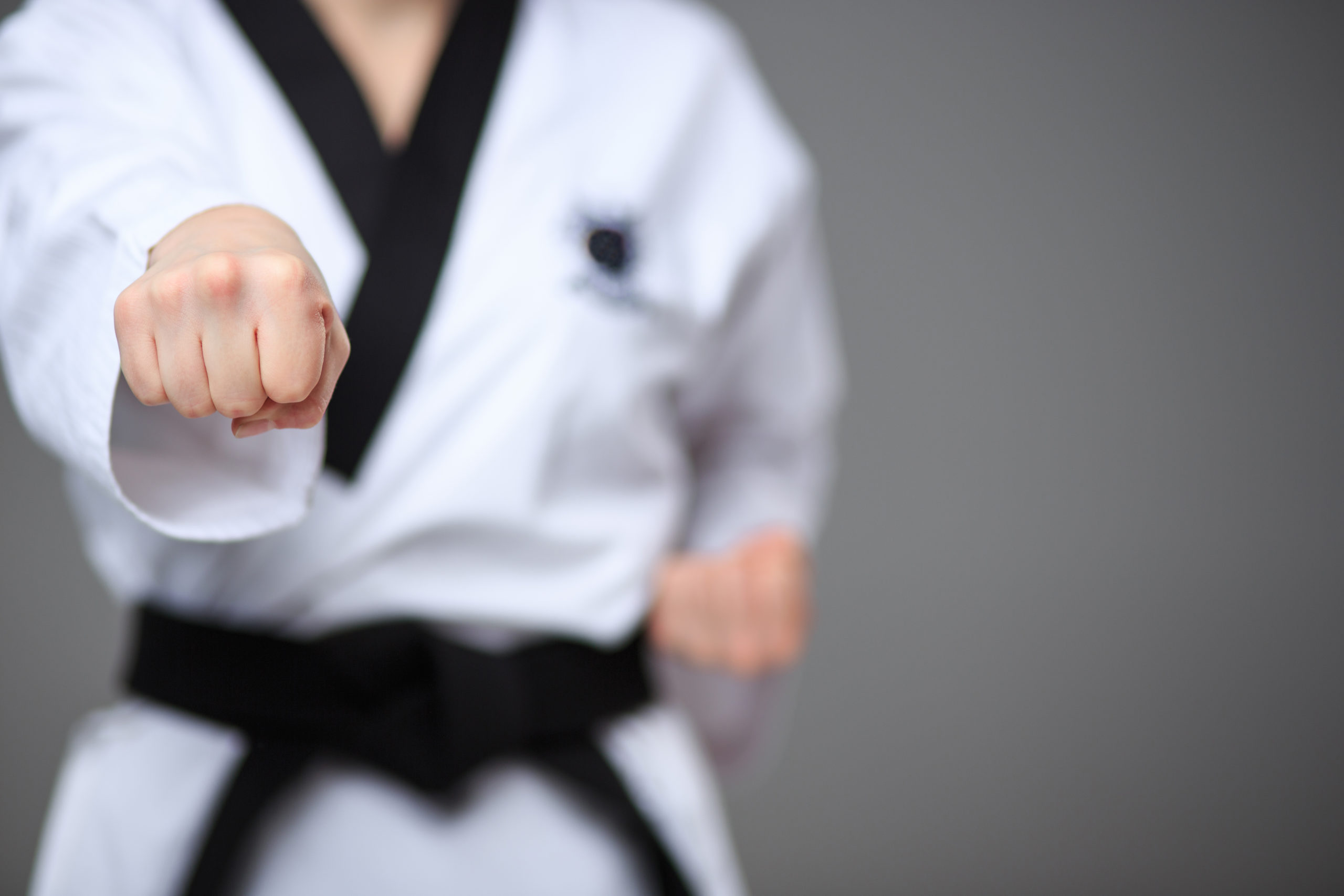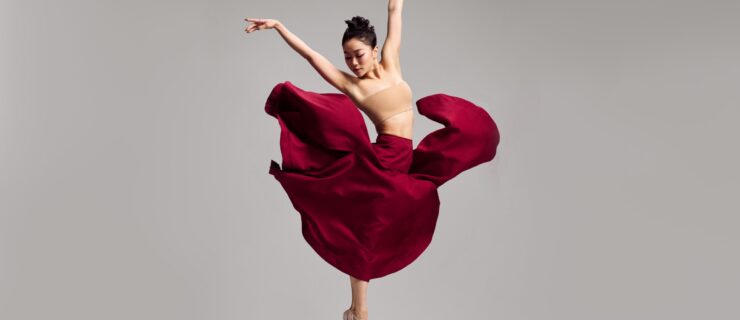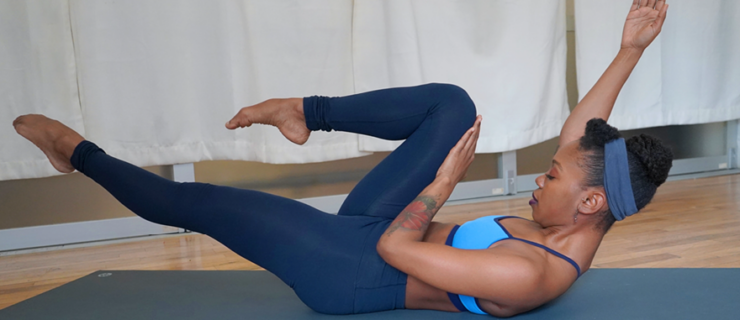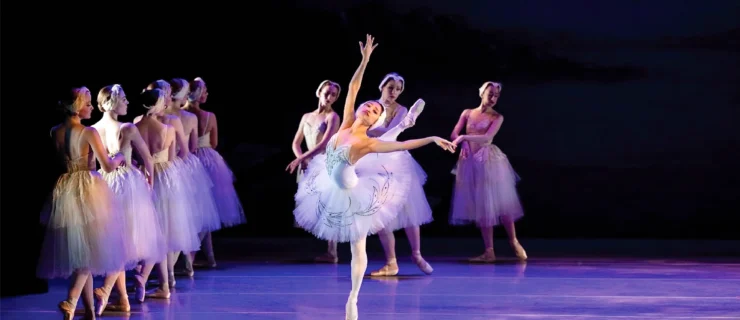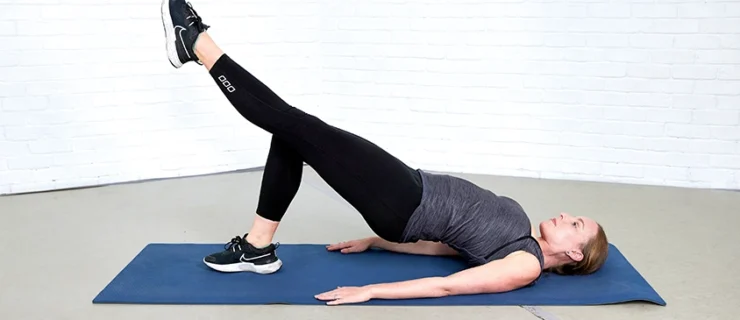Dancers On Assignment: Cross Training
We asked three working dancers to write about cross-training techniques that could benefit them in their work. Each dancer has a different amount of experience with and approach to the disciplines they describe.
Karate
When most people think of martial arts, they might assume it would be the last thing a ballet dancer would want to pursue. I, however, see little difference between martial arts and performing arts. The intense physical training, knowledge of anatomy, dietary awareness and risk of injury are all characteristics of both disciplines. It is easy to see how karate complements ballet physically. Basic karate exercises focus on many muscles that are underused in ballet class. I have also found that learning and understanding the principles of fighting can benefit ballet.
Of the countless styles of Japanese martial arts, I am a student of Seito Goju-ryu Karate-do. The dojo (training hall) where I take lessons is the Ten Ken Kan dojo in South Philadelphia. There is a list of kumite (fighting) principles on the wall. I recently sat down with my teacher, Shihan Khalid Newton, and discussed these principles with him to gain a better understanding of how karate helps me in ballet.
We started with principles that are clearly related to those in dance. Kokyo (breath control) is something some of my dance teachers have touched on. Shihan says, “Breathing… is crucial to give [us] bursts of dynamic movement.” With proper breath control, lifting and jumping become almost effortless.
Metske (eye control) is a “relaxed and controlled gaze without blinking.” When working on kata (forms), it’s easy to see how this type of focus helps with spotting. Widening your focus by utilizing peripheral vision is essential whether you are in a line in the corps or trying to use the entire stage.
“Mai (distancing) is tied to timing.” In fighting, there should “never [be] a clash, because you meld with your opponent’s movement,” Shihan says. Besides its use in partnering, this principle is also helpful to master for dancing with groups of people.
Tai sabaki (body shifting) helps to control your center. Muchimi (contact) is the ability to “stick to and adhere to your opponent through your supple movements.” The indescribable performance quality certain dancers seem to possess innately is the application of kiai (spirit). Isshin (total commitment) needs little explanation.
A less direct translation is needed for kozushi (off balancing). “[Throwing] your opponent off balance allows you to create a weakness to capitalize on,” Shihan says. Learning this allows you to better maintain your own balance.
On the other hand, there are even things we work on in ballet class that have hidden benefits for karate. The proper etiquette of finishing each combination fully is almost exactly how Shihan describes zashin (continuous mind). His definition is “bringing each movement to its fullest state, to its fruition.”
The kumite principle I have pondered most, however, is jin (benevolence). In developing jin, “you exude a positive energy to the point of influencing [your opponent’s] energy so that they lose the intent to attack you or do you harm,” Shihan says. All art has a transformative capacity both for the artist and the audience.
Even in studying the fighting arts, we can find new ways to enhance our performance quality and refine it. —Philip Colucci, Pennsylvania Ballet
Resistance Training
Resistance training can help balance leg and upper-body strength.
In class, I find myself paying most of my attention to my legs and feet, but recently I’ve put some thought into strengthening my upper body. It’s a given that upper-body strength is especially important for men, but women can also benefit from strengthening this area for partnering, as well as for dancing contemporary work.
Jan Griscom, a personal trainer at the Chelsea Piers Sports Center in New York City who holds a BS in Kinesiology , helped me with upper-body exercises that would be especially beneficial for ballet dancers. She suggested a technique called resistance training to strengthen and balance the muscular system.
“You can work a specific muscle and develop it to balance out the body of the dancer,” Griscom says. For instance, strengthening the rotator cuff (the four muscles that work together to allow the free range of movement of the upper arm and shoulder) will help stabilize the shoulder joint, which is important to counterbalance the extreme ranges of motion in ballet. Exercises 1 and 2 (below) will help strengthen that muscle group.
Often, because ballet dancers tend to have weak upper back muscles and tight pecs, protracted shoulder blades (shoulder blades that stick out) are a common trait. Exercise 3 works the scapular retraction muscles to return the blades to a neutral position.
For all of these execises, Griscom recommends beginning with a single light resistance tube, such as SPRI Exertube with very light resistance. As you get stronger and need more resistance, she suggests combining two very light resistance tubes—as opposed to moving up to a stronger tube—to facilitate more movement during the exercise. And instead of doing a set number of repetitions for each exercise, she recommends continuing until you “feel the burn,” stopping, resting and then trying to do one or two more. A light Theraband can also be used in place of the tube. —Karin Ellis-Wentz, American Ballet Theatre
Resistance Exercises
Exercise 1: External Rotation
Target: Rotator cuff
Stand, shoulders down and open, with a neutral spine. Feet, hip-distance apart with toes pointing out slightly. Wrap one end of a light resistance tube around each hand two to three times, palms facing up. Bring arms to your sides, locking your elbows into your waist and raisung your lower arms to a 90-degree angle. Keep upper arm still, and pull lower arms apart maintaining the 90-degree angle. Hold. Slowly return to starting position and repeat.
Exercise 2: Internal Rotation
Target: Rotator cuff
Wrap tubing around barre or other stable object, at about waist height. Stand sideways with left hip closest to the barre, and take both handles in left hand. Left arm assumes same position as in external rotation, right arm by side. Keep upper arm still, and pull lower arm into your body. Hold. Slowly return to starting position and repeat. Repeat on right side.
Exercise 3: Rowing
Target: Rear deltoid, mid and lower trapezius, rhomboids, latissimus dorsi, obliques
For this exercise the resistance must come from above. Close the tubing into a door using a door hanger, included with some brands of tubing, or loop around a secure object. (Or tie a knot in a Theraband and close in a door.) Sit in a chair facing the tubing. Take handles with right hand, rotate to the left at the waist and lean slightly forward. Extend your arm up at a 45-degree angle from your shoulder. Initiating from shoulder blade, pull shoulder and elbow back along this angle as you begin to rotate to center and straighten up. When the hand reaches shoulder level, continue rotating to the right. Reverse this motion to return to starting position. Repeat. Also do left side. A more advanced variation can be done standing in a lunge or on one leg.
Gyrotonic
Created by a former dancer, Gyrotonic lengthens and strengthens the body.
Developed in the ‘80s by former Rumanian State Opera principal dancer Juliu Horvath, Gyrotonic is often summed up, in simplest terms, as “yoga with resistance.” The exercises are built on a foundation of circular rather than linear movements that help to achieve greater flexibility and strength and require the use of a sophisticated piece of equipment called the Gyrotonic Expansion System. A set of rotating discs, weights and pulleys create resistance and allow for a wide range of stretching. The equipment and a well- trained instructor are essential to a proper Gyrotonic workout. Depending on where you live, these components can be hard to find and private sessions run anywhere from $40 to $70 per hour, which are the only real drawbacks.
For me, Gyrotonic Houston in Houston, TX, is ideal. It is owned by certified Gyrotonic instructor Amy Ell, who is also a dancer and choreographer. Her Gyrotonic sessions not only focus on strengthening the abdominals, but also include work to strengthen the lower back.
On the Expansion System, my movements are always initiated by using the entire core of the body, and proper alignment is stressed every step of the way. Ell constantly reminds me to lengthen my spine through my neck while keeping my shoulders down and my shoulder blades engaged.
Controlled breathing is also important. Ell suggests using a “hee” noise when exhaling, rather than just blowing the air out. This prevents the stomach muscles from pushing out as they would naturally and helps them to remain contracted.
The Gyrotonic workout progresses in steps so that you warm up the body in a logical order. You begin sitting straddled on a bench facing two rotating discs with handles. Your feet are on the floor in front of you, legs parallel, toes lifted. Placing your palms on the handles, you are led through a series of very specific exercises.
Using the body’s core, the arms and legs coordinate with the circular motion of the discs. For every contraction there is a release. Stretching is an integral part of the process. As the session progresses, the Expansion System’s weights and pulleys come into play. Depending on the exercise, your hands or feet are attached to the pulleys by a set of straps and the weights are adjusted for each person’s individual capabilities.
I’ve found that a complete Gyrotonic session is satisfying for the whole body: Turn in and turnout muscles are worked equally. The back muscles receive the same amount of attention as the abs. Your feet are also worked continuously, moving from full flex through to full point, concentrating on doing so without “sickling.” And the stretching exercises take you safely to your absolute maximum so that you strengthen and lengthen your muscles.
At session’s end, you can feel the extra space in your spine and the extra length in your extremities. You stand a bit taller and walk away ready to dance. —Tyann Clement, Houston Ballet
